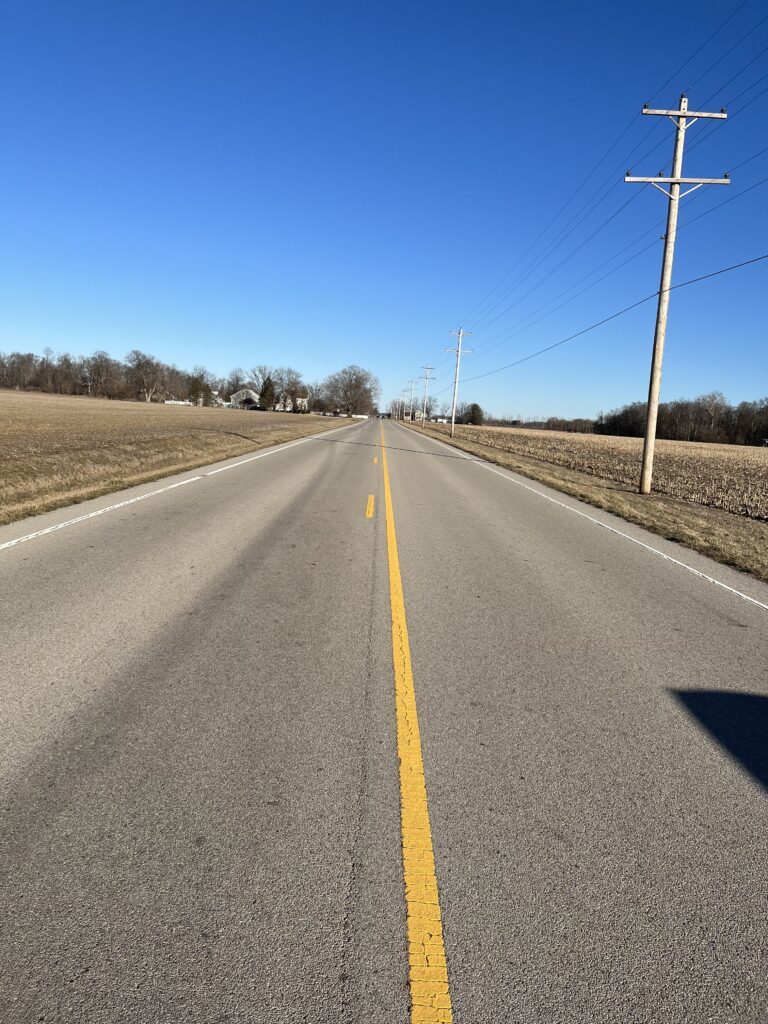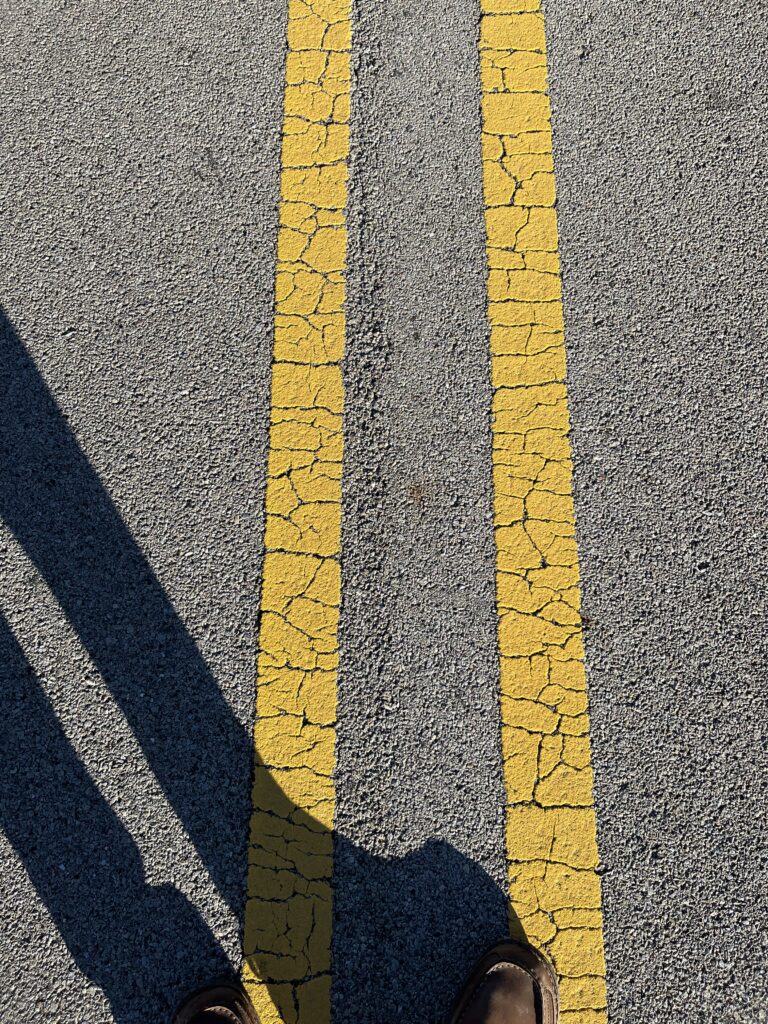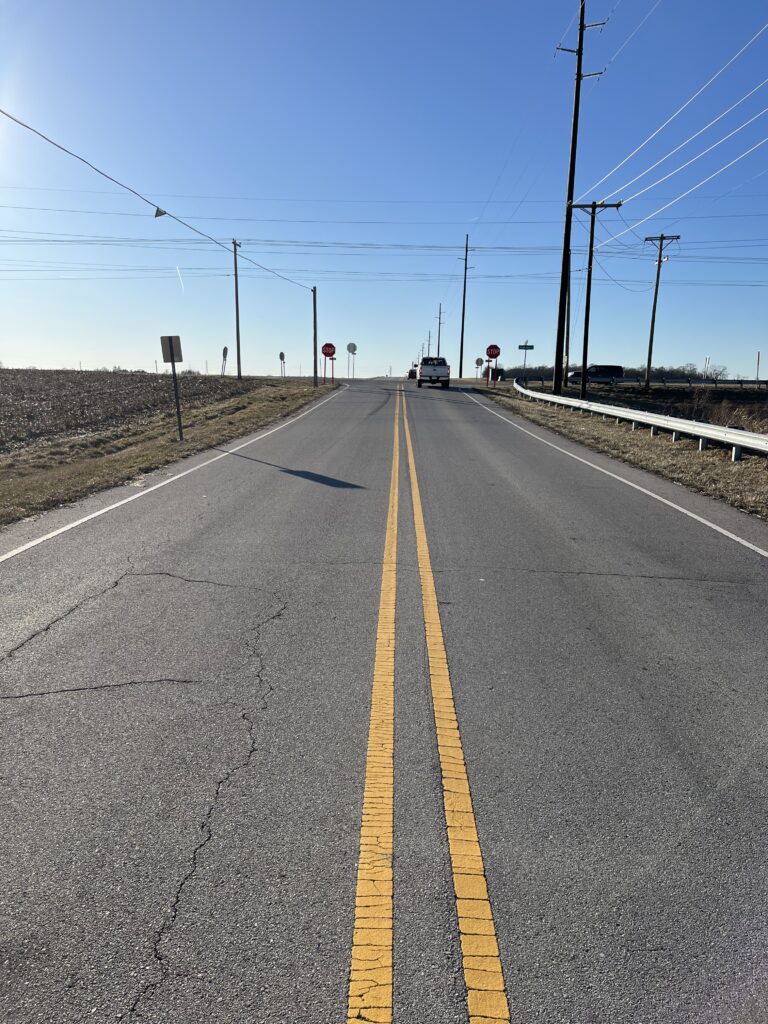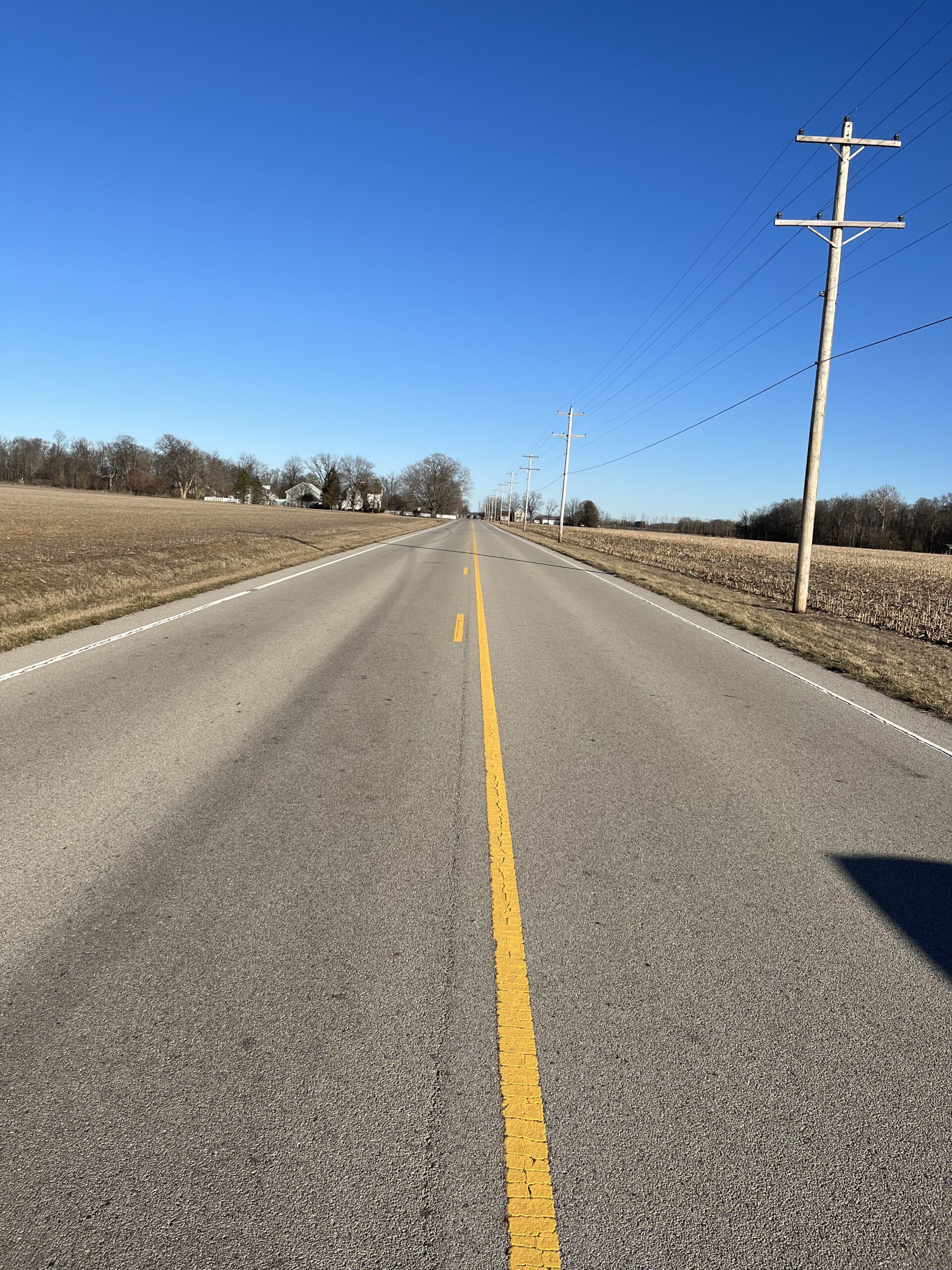Project Summary
By applying a Void Reducing Asphalt Membrane (VRAM) at the time of construction to longitudinal joints, local and state DOTs can ensure their roads are less vulnerable to the elements. VRAM fills pavement voids in the longitudinal joints and helps create stronger, safer, and more sustainable roads. Over the past 20 years, observations show that pavements utilizing VRAM last 3-5 years longer than those not constructed with VRAM.
Because VRAM delivers long-term economic, social, and environmental benefits to road construction projects, it is important that we continue to monitor the performance of VRAM on specific projects across the 23 states that have utilized this sustainable technology.
2023 Project Review
- Owner: Wayne County Indiana
- Applicator: Illiana
- Prime Paving Contractor: Milestone
- Location: Centerville, IN
- Date Constructed: 07-03-2018
- Date Reviewed: 2-13-2023
- Weather Conditions on the Day of Review: 53°F, sunny & windy at 4:30 p.m.
2023 Project Observations
Asphalt Material’s Field Support Manager Jim Cunningham reviewed the Gaar Jackson Road project in Centerville, Indiana. This is a two-lane county road. Detailed below are observations and images from this year’s review.
While there is a considerable amount of cracking in the thermoplastic striping, the pavement condition is not showing to be much different than it did 4.5 years after initial construction. While the longitudinal joint shows some slight opening between the two lanes, our experience indicates this can be observed on some VRAM projects. However, this is not the same as surface cracking often seen with pavements that didn’t use VRAM. It is important to note that the application of VRAM is still protecting the longitudinal joint from air and water infiltration.



Conclusion
The review found the project to be in very good condition. A joint opening was seen in some areas, but only ⅛ -¼” width.
While it is common for pavement markings to crack after one winter, it does reinforce why the centerline is the most important and expensive section of the road. Agencies make many investments at the centerline of the road including striping, reflective pavement markers (RPMs), and rumble strips. When the underlying pavement deteriorates, maintenance costs to repair these different treatments can become substantial.
Fortunately, utilizing a VRAM, like J-Band® protects the most important and most expensive 18″ of your roadways: the centerline. J-Band, a Void Reducing Asphalt Membrane (VRAM) with a track record of over 20 years, significantly reduces air voids and connected voids in longitudinal joints. It is applied before paving under the eventual location of the longitudinal joint. VRAM migrates upward after the hot mix is placed, filling voids from the bottom up, which reduces permeability.
You can explore our interactive map to see more projects that have utilized VRAM at the time of construction and learn more about how longer-lasting roads saves time, money and lives here.
J-Band is Asphalt Materials’ VRAM
At Asphalt Materials, we understand that longitudinal joint deterioration has long been a problem for engineers, applicators, and the driving public. VRAM was developed to help create longer-lasting, safer roads through a collaboration between state transportation agencies, industry experts and the laboratories of The Heritage Research Group.
Since 2002, this approach has improved the performance of centerline joints and entire pavements in more than 23 states. To learn more about J-Band®, or to connect with our team, you can email us at: Marketing@Asphalt-Materials.com.
Editor’s Notes:
J-Band®, CCAP® and T-Bond® are registered trademarks of Asphalt Materials, Inc. AMIBIND™, AMIBOND™, AMICYCLE™, AMIGUARD™ and AMISEAL™ are trademarks of Asphalt Materials, Inc.

